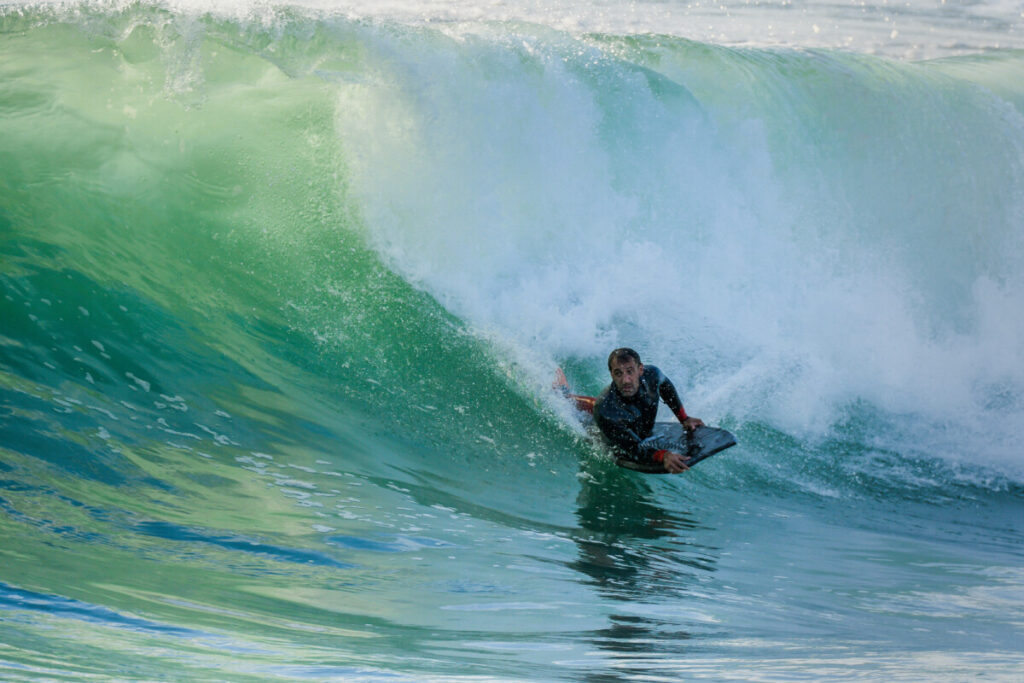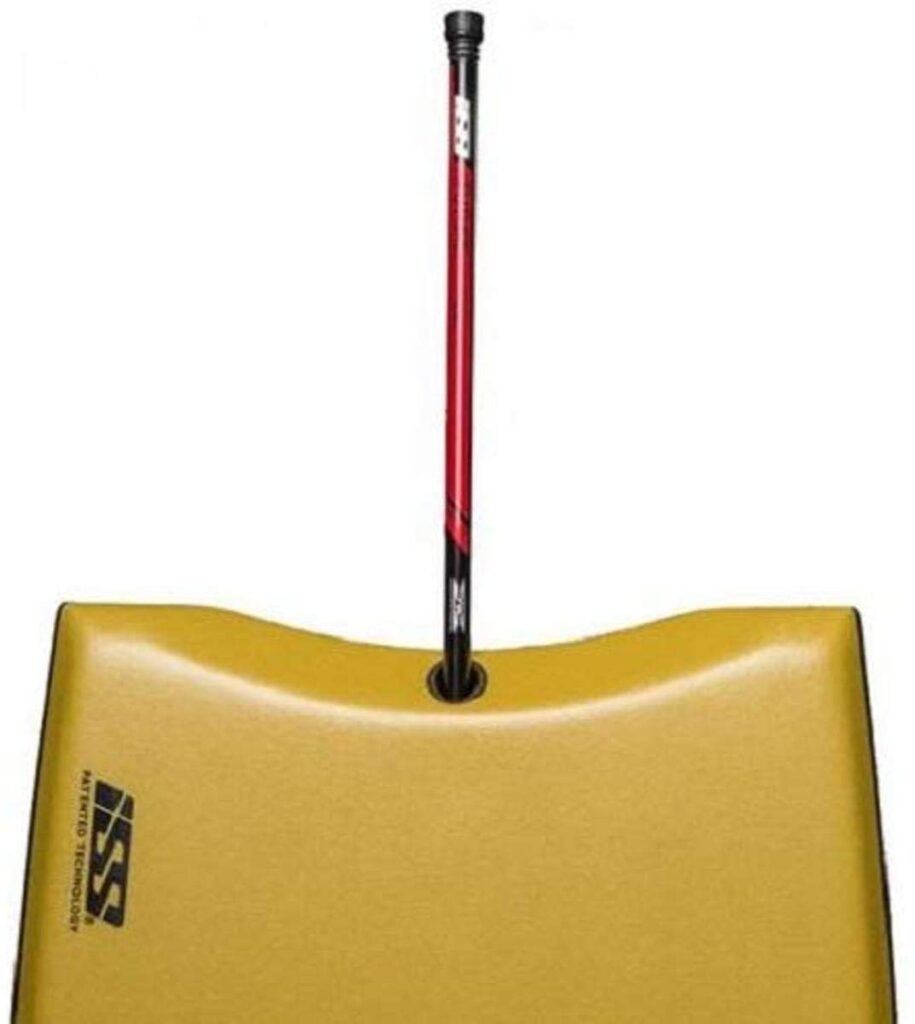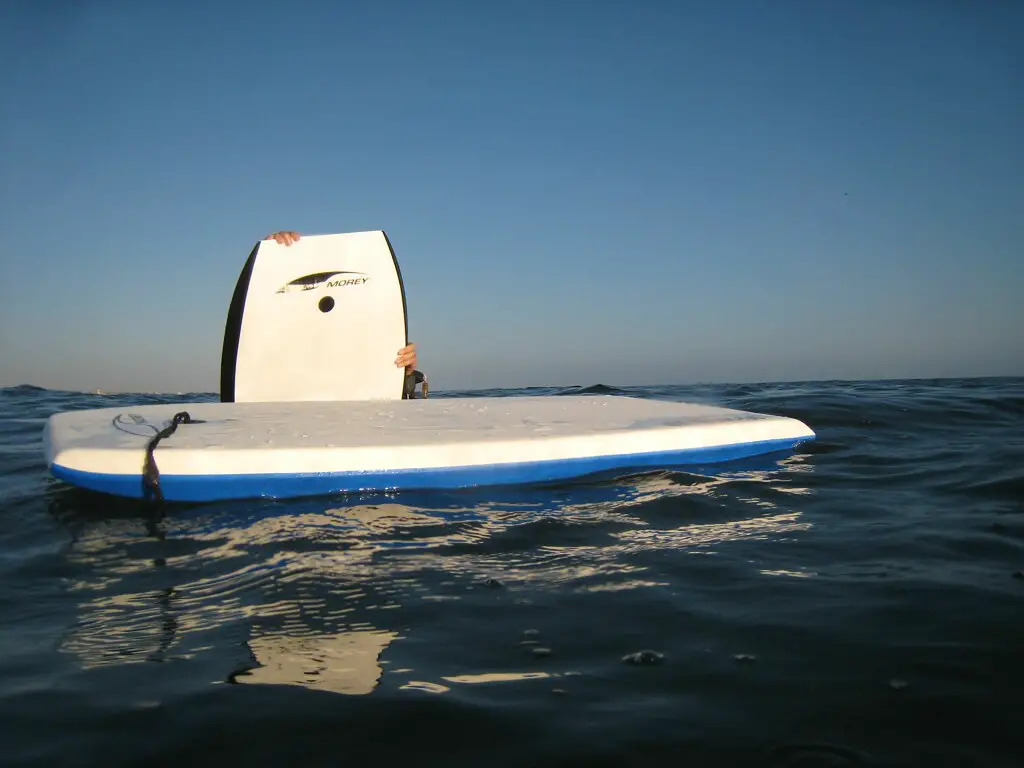Bodyboarding is a fun pastime and a great way to ride the waves. But choosing a bodyboard that will carry you through the waves comfortably can be a bit difficult if you don’t know what to look for.
A good bodyboard is tailored to the bodyboarder’s specific height, weight, and skill level. Beginner boards best suited for gentle, easy waves have EPS cores, while intermediate and advanced boards have PP or PE cores, depending on the temperature of the water and the rider’s weight.
Read on to find out more on how to pick out the best bodyboard for you!

Your Goal in Bodyboarding
The first and most important step to choosing a good bodyboard is figuring out what you want out of bodyboarding. Much of the process is finding what is comfortable for you, the rider, and not just what a salesman tells you will fit. There are guides to what will get you into a range that will make the process easier to get started, like this helpful sizing chart.
Do you want stability or speed? Are you a beginner who wants to get your feet wet, or are you ready to go beyond simply riding the waves? Your goals will inform your decisions on what is the best bodyboard for you and help you decide on which material your bodyboard will be made out of.
Core Material

Bodyboards are often made up of three different core materials, and sometimes these cores can be mixed for better stability (more on the most important bodyboard features can be found in this article).
Often EPS (Extruded Polystyrene) is upgraded with PP (Polypropylene), as this increases the stiffness of the board compared to a pure EPS board.
It is important to know that the water temperature has a great influence on the stiffness of a board:
warm water makes the board softer, cold water stiffer.
But: Not all of the three materials EPS, PE and PP behave the same!
And your weight and skills also play a role in deciding how stiff your board should be in the first place:
The rule of thumb is that the lighter you are and the smaller the waves you surf, the softer your board can be. To consolidate these thoughts a bit, let’s now take a closer look at the three most common bodyboard materials
Extruded Polystyrene (EPS) Core
Pure EPS Cores are very soft and often used for entry-level boards. They are best suited for soft, gentle waves and casual use. A board with an EPS core will quickly wear out after some regular wear and tear. However, these boards are oftentimes cheaper than bodyboards made of other materials.
Even if you plan on being an avid bodyboarder in the future, but still need to learn how to ride one, you should get a bodyboard with an EPS core, as they are the best board cores for beginners to use.
Dow Polyethylene Foam (PE) Core
Best suited for colder temperatures under 75°F, a bodyboard with a PE core is durable and buoyant. It is a bit heavier than a PP core board. In temperatures above 75°F, a PE board will become soft, and the risk of a buckled board rises. This board is the best choice for non-tropical bodyboarding, as it is almost guaranteed that the water temperature won’t cause the board to buckle.
It is important to know that PE quickly becomes quite soft at water temperatures above 75°F and that PE is somewhat heavier than the other materials. This means: if you are already a little heavier or prefer a smaller board in relation to your size, you should rather not take a PE board.
Also: if you often bodyboard in warm waters, a PE board must have at least one stringer to minimize the risk of it buckling.
Conclusion: as an absolute beginner it is not really recommended to buy a PE board. As an advanced surfer who still wants a slightly cheaper board, you can go for a PE core board as long as it has at least one stringer and you don’t really go boarding in tropical waters.
Polypropylene Foam (PP) Core
PP boards are able to endure both warm and cold temperatures but are the most expensive choice of the three cores. However, with the uptick in cost comes the reliability of a board that will carry you through year-round temperatures.
More experienced bodyboarders often have a bodyboard with this core. If you are a beginner bodyboarder, wait to get a bodyboard with this type of core until you have some experience. If you won’t go bodyboarding regularly and just want to use bodyboarding as a hobby, you may want to avoid boards with this core because of the price.
For more in-depth information about the pros and cons of the different types of bodyboards, check out our related article!

Stringers

Stringers are the fiberglass or carbon fiber spines that keep the bodyboard from warping while keeping flexibility (check out all the details about the bodyboard construction here).
A bodyboard can have up to three stringers, which aids in the longevity of the board.
All boards with a PP core have a stringer or mesh layer, as do most PE boards. If they do not have this, I would rather stay away from this product.
Interchangeable Stringer System (ISS)
A subtype of a stringer to look out for, a bodyboard with ISS will allow you to adapt the stiffness of the board to your needs.
Mesh
Mesh layers, which is a layer of mesh that is glued around the bodyboard core, is also a good sign of high quality of the board.
The mesh layer increases the robustness and durability of the board. By the way, there are boards with mesh layer, which have over stringers and those without stringers. Ideally you have a board with stringer and mesh layer.
Thickness
Bodyboards by nature are made thin to be maneuverable in the water. However, the thicker the board, the more buoyancy it generates and the easier it is to catch a wave, but the less dynamic it becomes to steer in the wave. If you’re not completely sure how to determine the right size of you Bodyboard, have a look at out detailed Bodyboard Size Chart for Adults or the Size Chart for Kids.
Important: The more you are at the beginning of your bodyboard journey, the more you should go for bigger boards (within the range given in the size chart) and a thicker board (ideally 53mm – 55mm). The extra buoyancy makes it much easier to catch a wave, especially at the beginning.
Leash
After all the work in choosing the best bodyboard for your surf, you don’t want to lose the board to the waves. This is why choosing the right bodyboard leash is so important, as most boards don’t come with one pre-installed.
Install the leash plug on the same side as your dominant arm so you can paddle without too much resistance. A left-handed surfer would install the leash plug on the left and put the cuff on their left arm or hand, while a right-handed surfer would install it on the right side of the board and put the cuff on their right arm or hand. Ambidextrous surfers have the choice of putting it in the middle of the board and can attach the cuff to either hand.
Summary: what makes a good Bodyboard for you!
Based on the information above, here is a table showing what the ideal bodyboard material is based on your expertise level.
| Ideal Bodyboard Material | Beginner Bodyboarder | Intermediate Bodyboarder | Expert Bodyboarder |
| EPS Core | X | ||
| PE Core | X | X | |
| PP Core | X | X | |
| Bodyboard Thickness | 55mm-53mm thick | 53mm-52mm thick | 53mm-51mm thick or thinner |
Most bodyboards are 51mm-55mm thick, so if you are an expert bodyboarder and find a board thinner than 51mm, try it out and see how it moves.
Now you know what bodyboard material is best for you based on your experience level. If you have any more questions, talk to the employees at the store where you plan on buying your bodyboard or have a look at our in-depth Bodyboard Buying Guide.






